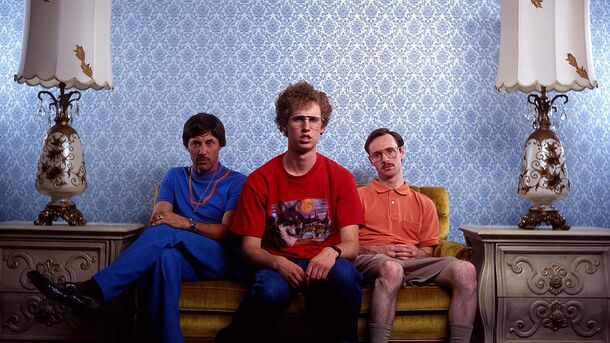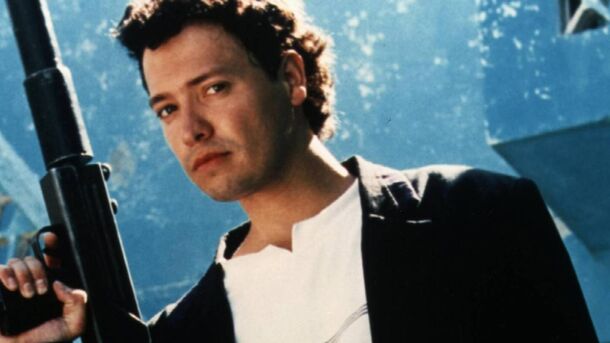10 Amazing Movies You Didn't Know Were Shot On A Shoestring Budget

As these directors have shown, sometimes money constraints lead to the most brilliant creativity.
"Following" (1999)
.jpeg)
Before Christopher Nolan was bending cities in "Inception " or portraying Gotham's masked crusader, he gifted us "Following", a noir crime thriller shot on a modest $6,000. The narrative pivots around a writer who follows strangers around London, hoping to find inspiration for his characters. However, he soon finds himself tangled with a criminal underworld, masterminded by a man named Cobb. Not THAT Cobb from "Inception", mind you! But you can see Nolan's early fascination with non-linear storytelling here. Some argue it's slightly undercooked compared to his later works, but it's fascinating to watch Nolan's mind play in this sandbox.
"Napoleon Dynamite" (2004)

An ode to oddballs everywhere, Jared Hess's "Napoleon Dynamite" was shot for around $400,000 and grossed $46.1 million. Set in rural Idaho, the film spotlights the quirks and quests of a socially awkward teen named Napoleon, his brother Kip, and their friend Pedro. Whether it's selling Tupperware or running for class president, the narrative zigs where you expect it to zag. Critics and audiences alike remain divided – some seeing it as a comedic masterpiece, others failing to see the appeal. Regardless, that dance scene? Iconic.
"El Mariachi" (1992)

Robert Rodriguez's "El Mariachi", shot for an incredibly lean $7,000, is a modern wild-west tale set in Mexico. A case of mistaken identity sends our guitarist protagonist into a whirlwind of gunfights and showdowns with the local cartel. Rodriguez's genius lies not only in his storytelling but also in the crafty methods he used to bring this story to life, such as repurposing wheelchair shots as dolly shots. While the movie occasionally feels its budget, the raw energy more than makes up for it. Truly, the director wrung every peso dry.
"Primer" (2004)
.jpeg)
Directed by Shane Carruth, who, fun fact, is also the lead actor, composer, and writer, "Primer" is the riddle wrapped in an enigma, delivered in a plain cardboard box. With an astounding budget of just $7,000, this film bends the rules of both time travel and indie film production. A tale of two engineers who inadvertently invent a time machine in their garage, the plot spirals, loops, and collapses upon itself in such a way that multiple viewings are almost mandatory. While the device they've built hints at immense power, it's their personal moral compasses that guide the story's trajectory. Some argue that the film's complexity is its Achilles' heel, while others see it as its greatest strength.
"Pi" (1998)
.jpg)
Darren Aronofsky's directorial debut "Pi" is an edgy black-and-white drama that ventures deep into the human psyche, exploring obsession, mathematics, and spirals both literal and metaphorical. Crafted on a shoestring budget of $60,000, it tells the story of Max, a reclusive number theorist, who stumbles upon a 216-digit sequence that might hold the key to predicting stock market fluctuations. Soon, Wall Street and a mysterious Hasidic sect are on his tail. But as Max plunges deeper, the line between genius and madness blurs, leading to an ending that truly divides audiences.
"Clerks" (1994)
.jpg)
The very definition of bootstraps cinema, Kevin Smith's "Clerks" cost around $27,375 and was shot mainly at the convenience store where Smith worked. Relying on dialogue rather than lavish sets, the film chronicles a day in the life of two store clerks, Dante and Randal, capturing their hilarious misadventures, existential rants, and unwelcome customers. Yes, the movie can be rough around the edges, but it's these very edges that have endeared it to so many. Critics may point out the amateurish acting, but its authentic voice shines through, illuminating the mundane in the most captivating light.
"Slacker" (1990)
(68).jpeg)
Richard Linklater's eccentric tapestry of life in Austin, Texas, "Slacker" cost a mere $23,000 to make. The camera drifts from one character to the next, acting like a silent observer of various mundane yet oddly fascinating daily interactions. There's no central plot or hero's journey – just vignettes of life in all its weird, wonderful glory. While some might feel it lacks direction, others laud it for portraying life in its most unfiltered form, where not everything needs a point to be poignant.
"Tangerine" (2015)
(52).jpeg)
Directed by Sean Baker and shot entirely on iPhones, "Tangerine" follows two transgender sex workers over the course of Christmas Eve. It's a roller-coaster through Los Angeles's underbelly, painted in hues that are both lurid and endearing. Costing around $100,000, it's a testament to how compelling narratives don't need high-end equipment. The film occasionally betrays its digital origins, but the raw energy of the story and the characters ensure that most viewers won't mind one bit.
"Paranormal Activity" (2007)
(37).jpeg)
Move over, Blair Witch; Oren Peli's "Paranormal Activity" was made for a mere $15,000 and terrified audiences without CGI monsters or A-list stars. A couple sets up cameras around their home to capture what seems to be a haunting. The tension escalates not with dramatic music but with deafening silence and chilling subtlety. Some scenes might be a tad drawn out, and skeptics might argue over its authenticity, but there's no denying its chilling impact.
"Once" (2007)
(17).jpg)
A musical odyssey crafted for about $160,000, "Once", directed by John Carney, traces the journey of a busker and an immigrant as they make music in Dublin. This isn't your traditional big-number musical. Songs emerge organically, blending seamlessly with the narrative. While some may yearn for more plot-driven content, the simplicity of two people connecting through music proves enchanting.